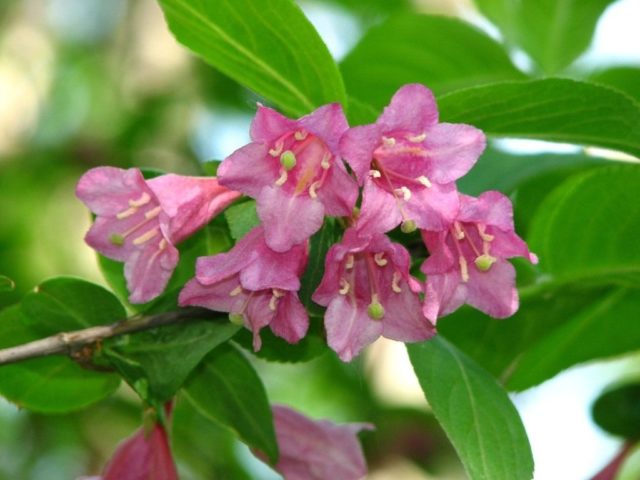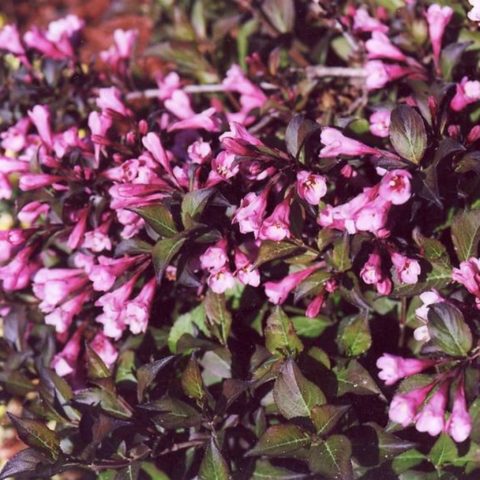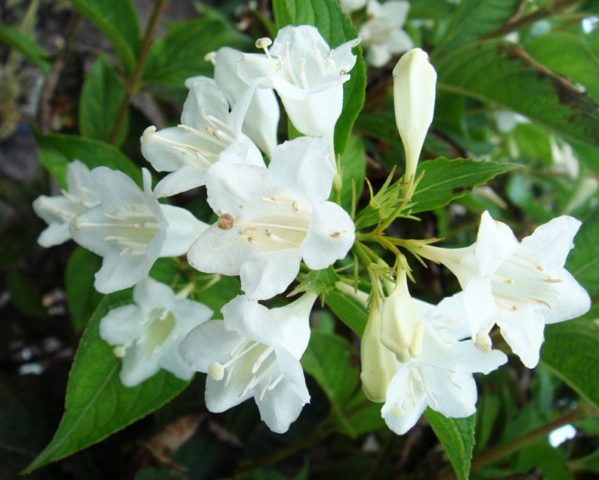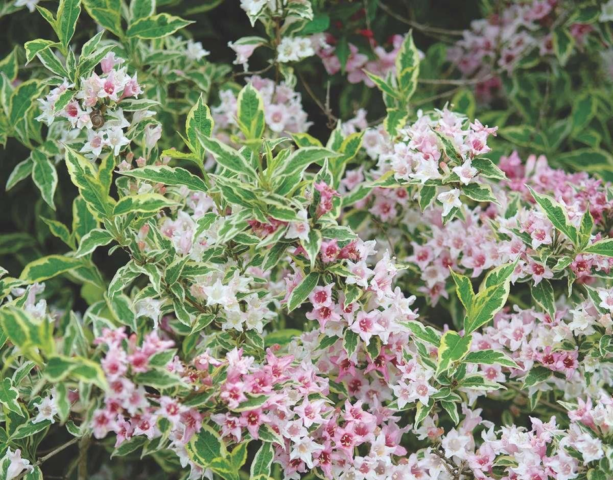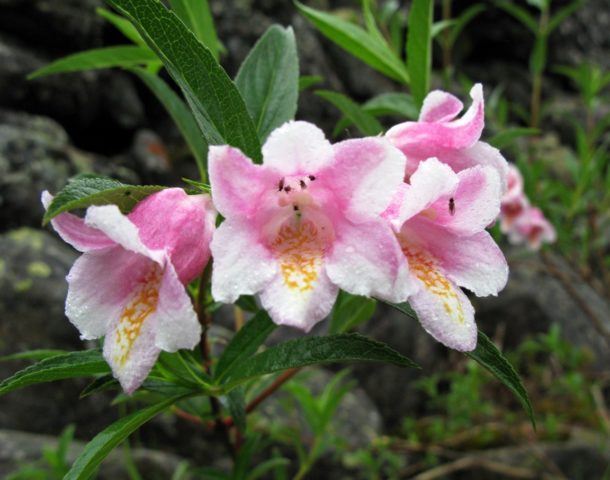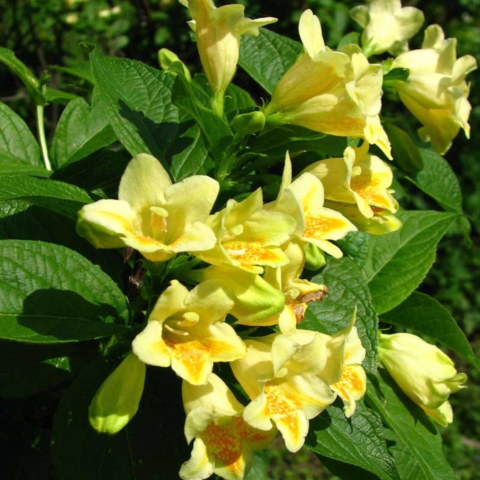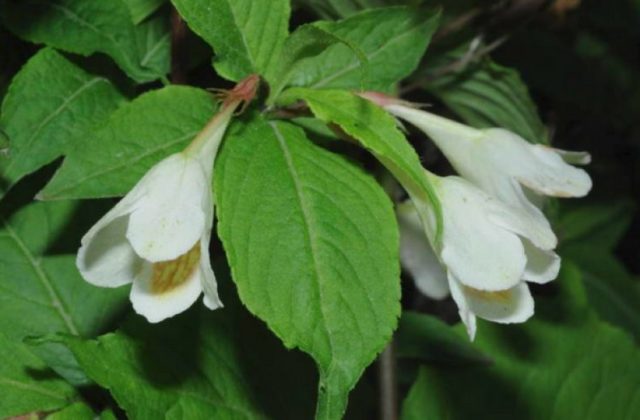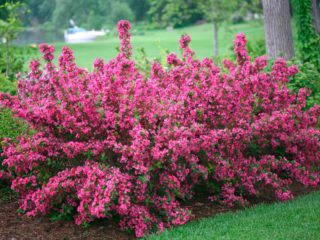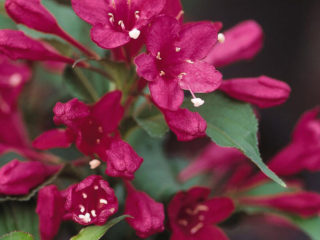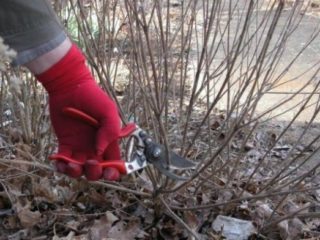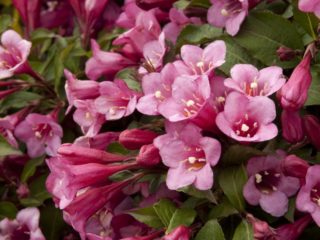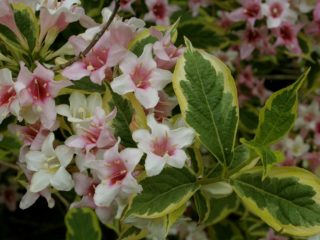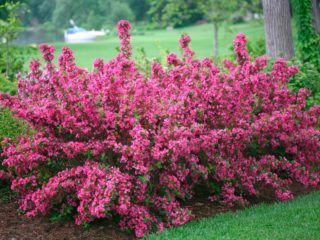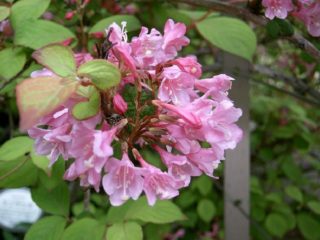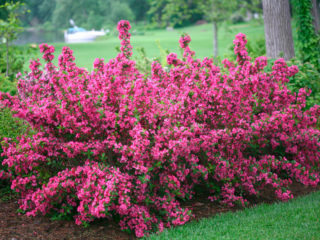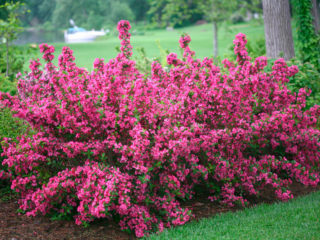Content
Planting and caring for weigela in Siberia and the Urals have their own characteristics. If in warm climates growing this ornamental shrub does not require much effort, then in regions with harsh winters weigela needs to be given more attention.
Is it possible to grow weigela in the Urals and Siberia
If agricultural cultivation techniques are followed and the correct variety is selected, the shrub will delight gardeners with lush flowering even in these cold areas.
Weigela varieties for Siberia
In Siberia, the most unpretentious varieties of weigela should be planted, since frost poses the greatest danger to plants. With proper winter shelter, weigels of these varieties can withstand short-term temperatures down to -40 °C.
Weigela early
As the name suggests, this variety is characterized by early flowering.From mid-May, abundant pink or light violet-red flowers about 5 cm long bloom on this spreading shrub. The bush is compact, does not exceed 2 m in height. The leaf blade is about 7 cm long, pubescent, elongated with a sharp tip, jagged at the edges. The variety is frost-resistant and can withstand spring frosts well.
Weigela blooming
This variety blooms twice a year: in June there is abundant flowering lasting up to 20 days; under favorable weather conditions it can bloom a second time at the very beginning of autumn. Weigela flowering combines several subspecies:
- Purpurea with dark pink flowers and red-brown leaves.
- Alba, white flowers acquire a pinkish tint when they bloom.
- Nana Variegata with bright pink corollas and light edging of small leaves. This variety tolerates frosts down to -24°C.
Weigela is nice
The shrub of this variety reaches a height of 150 cm. The crown is formed by pubescent shoots covered with elongated oblong leaves up to 6 cm long. Pleasant weigela begins flowering in the last days of May, and can bloom again in the third decade of August. It is distinguished by rather large funnel-shaped flowers. The outside of the corolla is pink with a purple or lilac tint. The inside of the flower is light pink.
Weigela varieties for the Urals
The climate of the Urals is heterogeneous, and weather conditions vary significantly in different areas. Whether weigela can grow in the Urals depends on the variety and the gardener’s ability to provide it with proper care. Just as when growing in Siberia, for cultivating this shrub in the gardens of the Urals it is worth giving preference to hardy, frost-resistant varieties.
Weigel Middendorf
This variety of weigela is one of the hardiest, but in terms of decorative qualities it is in no way inferior to more capricious varieties. Thanks to its unpretentiousness, it will feel good not only in the Urals, but also in Siberia. The bush reaches a height of 250 cm, has oblong pointed leaves and large (up to 4 cm) flowers in the shape of an elongated bell. The corollas are yellow with orange dots. Flowers can be either single or collected in small inflorescences. The flowering period occurs at the beginning of May and lasts up to 1 month. Repeat flowering is often observed in early August.
Veigel Maksimovich
The shrub of this variety has a beautiful spreading crown and grows to a height of 150 cm. Green leaves up to 8 cm long have an oblong shape with a point at the top. In the second half of May, weigela Maksimovicha blooms with medium-sized soft yellow flowers in the shape of a funnel-bell. The flowering of this variety is not abundant. Although this weigela does not have increased frost resistance and can withstand cold temperatures down to -10 °C without shelter, with proper shelter it winters well in areas of the Urals with a milder climate.
Planting and caring for weigela in the Urals and Siberia
Growing shrubs in Siberia and the Urals does not differ significantly from weigela agricultural technology in other territories. Numerous photos indicate that the correct choice of location, adherence to planting and care technologies make it possible to obtain beautiful, healthy, profusely flowering weigels even when grown in the conditions of Siberia and the Urals.
Recommended timing
In Siberia and the Urals, weigela is planted in open ground in early spring, when the danger of returning frosts has passed, especially since young plants up to 4 years of age, which are especially sensitive to frost, are best suited for planting. Only when the bush is planted in the spring in these regions will the young plant have time to take root and survive the winter well.
Site selection and soil preparation
When planting weigela in the Urals or Siberia, the correct choice of location plays an important role. Relatively short summers, the presence of hot summer days, cold winds - these features of the climate of the Urals and Siberia can significantly damage the bush. In order for weigela to feel good and not lose its decorative appearance, it should be given a place protected from drafts and well warmed by the sun. In this case, you need to think about shading the plantings from midday sunlight. You can plant the shrub in the partial shade of tall trees with a loose crown. According to reviews of many gardeners who grow weigela in Siberia and the Urals, areas on the south side of buildings are best suited for it, since they are not exposed to direct sunlight.
Weigela prefers loamy or sandy loam soils with a neutral or slightly alkaline reaction, to which humus, sand and turf soil should be added before planting. The shrub does not tolerate stagnant moisture in the soil, so areas prone to waterlogging must be drained. Areas with groundwater close to the surface should be avoided.
Landing algorithm
The technology for planting weigela in open ground in Siberia and the Urals is quite simple:
- dig a hole for planting measuring about 40x40 cm;
- pour broken brick, crushed stone or other drainage material onto the bottom;
- add compost mixed with nitrophoska;
- treat the root system of the seedling with a root growth stimulator;
- place the cutting in the center of the hole and cover it with soil;
- compact the soil and water generously;
- mulch the tree trunk circle.
Features of growing weigela in Siberia and the Urals
According to reviews from flower growers, growing weigela in the Urals and Siberia is not very difficult. Shrub agricultural technology involves watering, fertilizing, mulching or loosening, pruning and preparing for winter.
Watering
When watering shrubs, the main thing is to maintain a balance: weigela does not tolerate waterlogged soil, but dry soil does not benefit it either. The frequency and volume of watering depend on the characteristics of the soil and the prevailing weather. During the period of active growth and flowering, the plant needs moisture more than at other times. In addition, in the spring, immediately after removing the winter shelter, weigela needs to be watered abundantly.
Mulched shrubs need watering less often.
Top dressing
The first feeding is done in the spring, even before the snow melts. Potassium fertilizer, superphosphate, and urea are scattered around the plant. During the formation of buds, potassium sulfate and superphosphate are added.
Trimming
When pruning weigela, it is important to remember that flower buds form on last year's shoots, so autumn pruning should not be done.
In early spring, immediately after the plant is released from its winter shelter, sanitary pruning is carried out, and in the summer, after flowering has ended, old and faded shoots are removed, that is, a formative pruning is performed.
Preparing for winter
Proper preparation for winter of weigela grown in the Urals and Siberia is of paramount importance. Even the most frost-resistant varieties need reliable shelter. In order for weigela to survive the winter well, it is necessary to perform the following procedures:
- pre-winter watering;
- forming a hill of soil around the trunk;
- mulching the tree trunk circle with organic materials;
- shading from sunburn;
- covering the crown of the plant with agrotextiles, burlap or other insulating material.
Pests and diseases
With good care, weigela rarely gets sick, but can be affected by insects.
Most often, plantings are plagued by aphids, spider mites, and thrips, which in advanced cases can even destroy the plant. Insecticides and folk remedies work well with them, for example, an aqueous infusion of onion or garlic peels, tobacco dust, laundry soap, hot pepper. If the plantings have been attacked by these insects, you should be prepared for the fact that the affected plants will have to be treated several times.
With prolonged stagnation of moisture in the soil, gray rot may appear. In this case, the plant will benefit from fungicides and proper care of the bush: optimal watering, mulching or loosening, weeding.
Fusarium can infect weigela due to non-compliance with the rules for pruning shrubs - the causative agent of this disease enters the plant through untreated cuts and wounds. If most of the bush is not affected, use Fundazol and cut off the diseased parts of the plant.
Powdery mildew usually appears on the lower branches. For prevention purposes, shoots that are close to the ground should be cut off, and already diseased plants should be sprayed with fungicides.
Conclusion
Planting and caring for weigela in Siberia and the Urals is not fundamentally different from growing this shrub in other territories, however, the characteristics of climatic zones should be taken into account. Thus, short summers and cold winters, characteristic of the climate of Siberia and the Urals, place special demands on the frost resistance of weigela. However, even sometimes harsh growing conditions, if agricultural technology is followed, will not become an obstacle to growing this oriental beauty.
